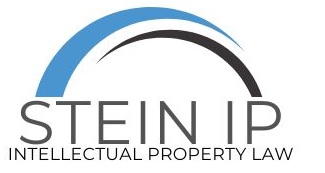- HOME
- > Blog Main Page
- > Status of the Tillis-Coons Bill to Perform 35 U.S.C. 101
Status of the Tillis-Coons Bill to Perform 35 U.S.C. 101
By Judy Lu

To clarify the evaluation and broaden the scope of patent eligibility in 35 U.S.C. 101, Senator Thom Tillis (R-NC), Senator Chris Coons (D-DE) and three Representatives released a bipartisan, bicameral draft bill (“Tillis-Coons Bill”) to reform Section 101 of the Patent Act on May 22, 2019.
Three Senate Judiciary Subcommittee on Intellectual Property hearings were held in June to discuss the state of patent eligibility and solicit other stakeholder’s feedback. These three hearings featured three panels of five witnesses each, for a total of 45 witnesses. After the final hearing, the bill draft went back for changes.
What is 35 U.S. C. 101?
35 U.S.C. 101 Inventions Patentable:
Whoever invents or discovers any new and useful process, machine, manufacture, or composition of matter, or any new and useful improvement thereof may obtain a patent therefor, subject to the conditions and requirements of this title.
To be patentable, the invention must meet four requirements:
1. “Whoever invents or discovers” indicates that a patent may only be obtained by the person who has engaged in the invention process before Sep.16, 2012 (except as otherwise provided in pre-AIA 37 CFR 1.41(b)).
2. “A” patent means there would only be one patent granted for each invention. For example, when two applicants claim the same invention, the patent will not be granted and they will receive a statutory double patenting rejection.
3. The word “useful” is defined in MPEP 2107 and includes two forms. The first is where it is not apparent why the invention is “useful.” It requires the applicant to identify the invention’s specific and substantial utility and provide enough information to assess by those familiar with the field of the invention. The second form is where an assertion of specific and substantial utility for the invention made by an applicant is not credible.
A “specific utility” is specific to the subject matter claimed and can “provide a well-defined and particular benefit to the public.”
A “substantial utility” is to claim the invention has a significant and presently available benefit to the public.”
4. “Process, machine, manufacture, or composition of matter” directs to “subject matter eligibility” with two criteria. Firstly, the invention must fall within one of the four categories. Secondly, it must be directed to the patent-eligible subject matter and not a judicial exception. The statutory categories exclude “Laws of nature, natural phenomena, and abstract ideas.”
The last two elements are the core of controversy and also what Tillis-Coons Bill mostly addressed.
Key changes
Tillis-Coons Bill made two key changes under section 101:
Whoever invents or discovers any useful process, machine, manufacture, or composition of matter, or any useful improvement thereof, may obtain a patent therefor, subject to the conditions and requirements of this title.
The draft bill clarified that:
Eligibility under this section shall be determined only while considering the claimed invention as a whole, without discounting or disregarding any claim limitation.
Three additional legislative provisions at the end of this bill explicitly showed the draft bill was trying to broaden the scope of patent eligibility and in favor of inventors. It specifically pointed out that “no implicit or other judicially created exceptions to subject matter eligibility, including ‘abstract ideas,’ ‘laws of nature,’ or ‘natural phenomena,’ shall be used to determine patent eligibility under section 101, and all cases establishing or interpreting those exceptions to eligibility are hereby abrogated.” This bill attempted to define subject matter eligibility more clearly and expand the scope of eligibility to cover more inventions.
Results
Tillis pointed out that “the U.S. patent system with regard to patent eligibility is broken and desperately needs to be repaired.”
Many inventions are assessed ineligible for granting a patent based on the two-step Alice/Mayo test for the patentable subject matter. The first step is to define whether the patent is “directed to” a law of nature, natural phenomenon, or abstract idea. And the second step is to define whether the patent has an “inventive concept.” The test is criticized for its great level of uncertainty regarding the boundary of exception, especially in the computer software and life sciences sectors, such as the pharmaceutical industry and biotechnology.
This is also what Tillis-Coons Bill tried to identify more clearly. However, some witnesses from the hearings pointed out that the current assessment standard can help to decide patent infringement lawsuits quickly and efficiently. Several witnesses viewed the bill as trying to permit patenting of mere abstract ideas and nontechnical methods. Eventually, the bill did not have a uniform agreement from 45 witnesses and went back for changes.
References
Sens. Tillis and Coons and Reps. Collins, Johnson, and Stivers Release Draft Bill Text to Reform Section 101 of the Patent Act https://www.tillis.senate.gov/2019/5/sens-tillis-and-coons-and-reps-collins-johnson-and-stivers-release-draft-bill-text-to-reform-section-101-of-the-patent-act
Quinn G. et al (2019). The Year in Patents: The Top 10 Patent Stories of 2019 https://www.ipwatchdog.com/2019/12/29/year-patents-top-10-patent-stories-2019/id=117177/
2104 Inventions Patentable - Requirements of 35 U.S.C. 101 [R-08.2017] https://www.uspto.gov/web/offices/pac/mpep/s2104.html
35 USC § 101: Statutory Requirements and Four Categories of Invention https://www.uspto.gov/sites/default/files/101_step1_refresher.pdf
2107 Guidelines for Examination of Applications for Compliance with the Utility Requirement [R-11.2013] https://www.uspto.gov/web/offices/pac/mpep/s2107.html#d0e198469
Tillis-Coons Bill https://www.tillis.senate.gov/services/files/E8ED2188-DC15-4876-8F51-A03CF4A63E26

TAGS:
RECENT POSTS
